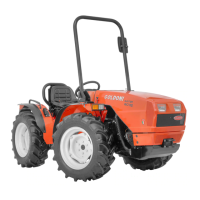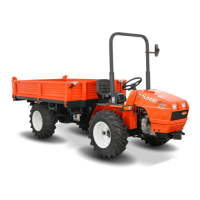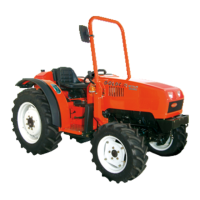Slopes are a major factor related to loss of
control and tip
-
over accidents, which can
result in severe injury or even death. All
operations that take place on sloping
ground require extra caution.
● Do not work on muddy or soft ground.
● Do not work on excessively steep
slopes.
● Take the greatest care when working
on slopes.
● Always make sure that you have a firm
foothold on slopes.
● Always work the soil across slopes,
never in the uphill or downhill
directions.
● Watch out for holes, ruts, bumps, rocks
or other hidden objects. Uneven terrain
could cause the machine to overturn.
Tall grass can hide obstacles.
● Take the utmost care on wet grass.
Tires may lose their grip on slopes
even though the brakes are functioning
properly.
● Choose a low ground speed so you will
not have to stop or shift gear on the
slope.
● Always keep the gear engaged when
going down slopes. Never coast
downhill with the machine in neutral.
● Avoid starting, stopping or turning on
slopes. If the tires lose their grip,
disengage the PTO and proceed
slowly, straight down the slope.
● Keep all movement on slopes slow and
gradual. To not make sudden changes
in speed or direction as this could
cause the machine to tip over.
● Take the greatest care when using the
machine near ravines, ditches,
embankments or bodies of water. The
machine could suddenly tip over if a
wheel goes over the edge or the edge
caves in. Allow for a safety area
between the machine and any hazard.
● The risk of tipping over increases to a
considerable extent if the tires have
been regulated with a narrow track
width and the machine is driven at high
speed.
● Comply with the manufacturer
’
s
recommendations for wheel weights or
counterweights, which can increase
stability when work is performed on
slopes or when front or rear
-
mounted
implements are used. Remove the
weights when they are not required.
